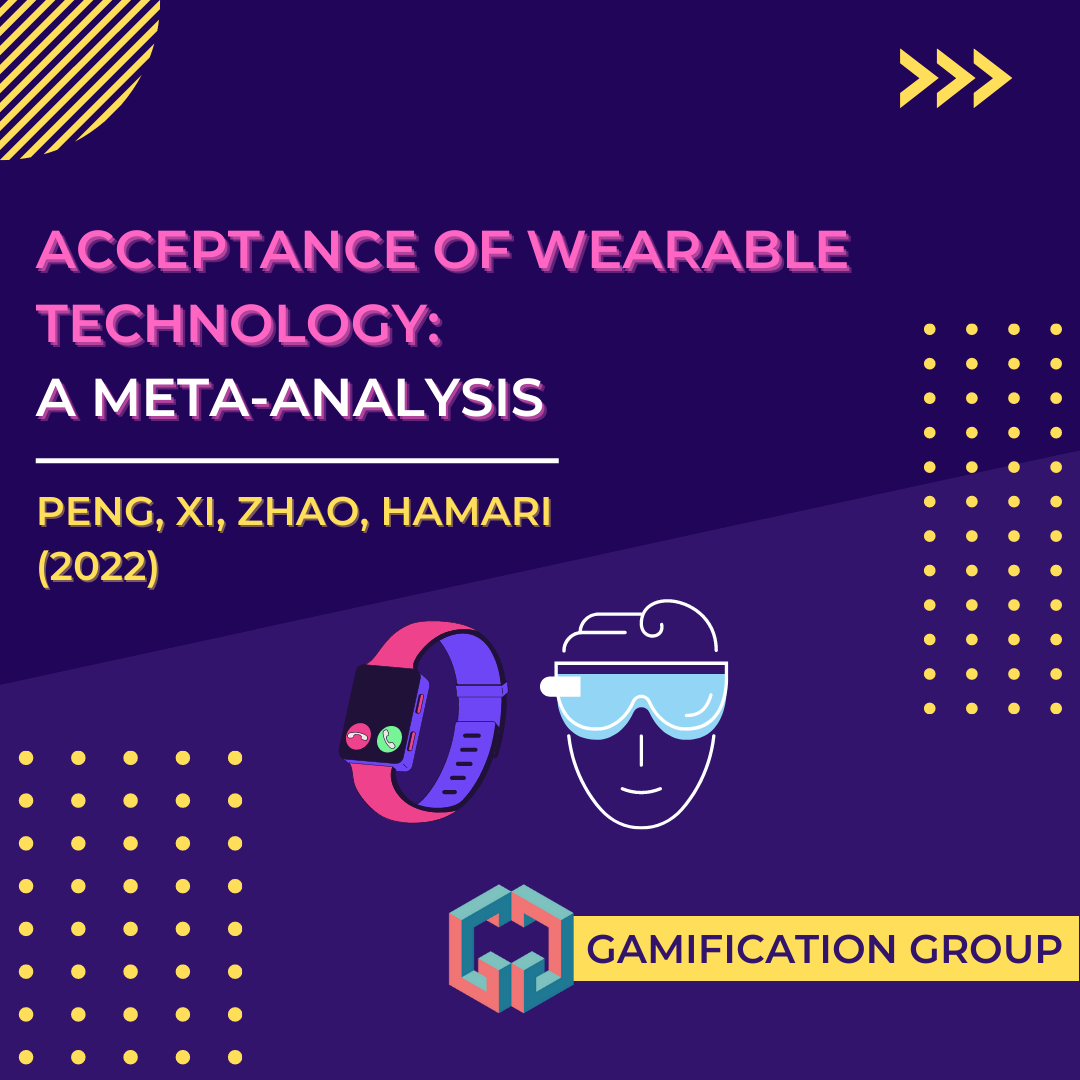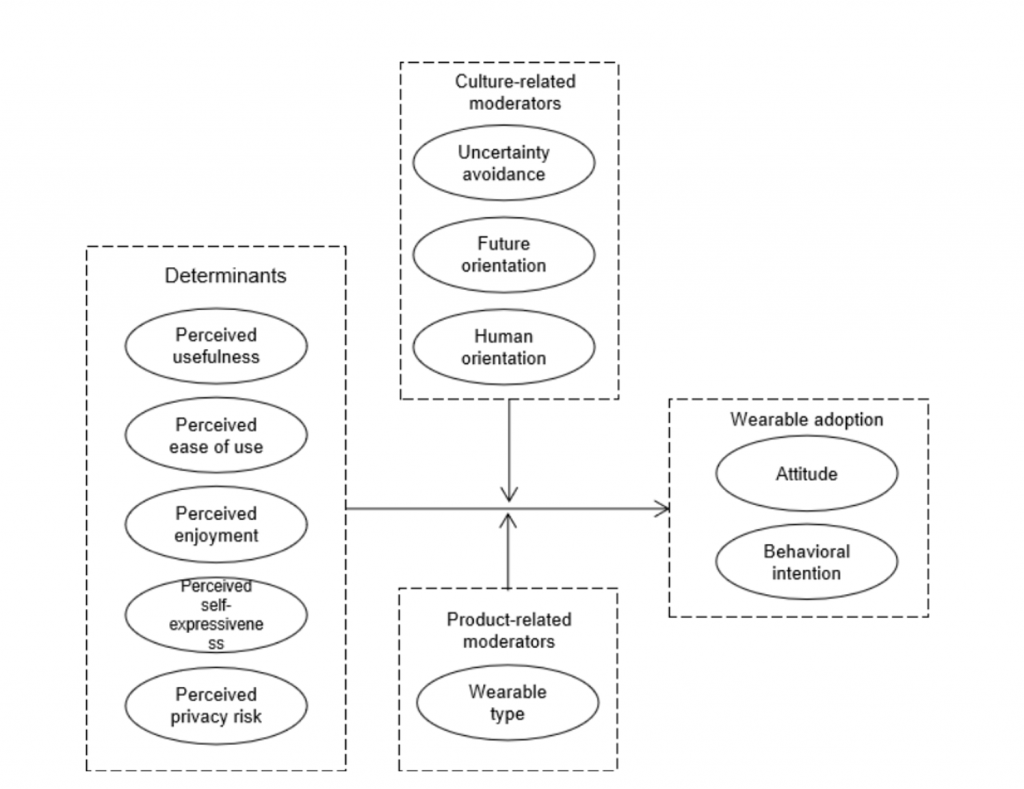
Acceptance of Wearable Technology: A Meta-Analysis
Wearable technologies are a category of smart electronic devices that can be worn on the body and often collect, track, and analyze biological and physiological data. In recent years, there has been a growing trend in this area that is expected to continue. The literature has examined various factors associated with wearable technologies. However, there is a lack of an approach that takes a holistic look at the mechanisms of which factors lead to different levels of wearables adoption, in what ways, and under what conditions. This article presents a meta-analysis of 40 articles with 44 independent samples in the field, with the goal of providing a concise view of the determinants of wearable technology adoption from the perspective of the technology acceptance model (TAM).
The meta-analytic framework constructed through the literature review has 3 aspects aiming to understand wearable adoption. Firstly, the determinants consider the perception of wearables through 5 sub-dimensions: perceived usefulness, ease of use, enjoyment, self-expressiveness, and privacy risk. The determinants are aided by culture-related moderators assessing uncertainty avoidance, future orientation, and human orientation. Lastly, a specific moderator considers the type of wearables, especially smartwatches.

Through this framework, 12 hypotheses are constructed to examine various determinants’ and moderators’ effects on wearable adoption. These hypotheses then are tested through correlation and moderation analysis.
The results show that all of the proposed factors were found to be important predictors of wearables adoption. Perceived usefulness and perceived enjoyment were the most important drivers of wearable technology adoption. In addition to the effects of the determinants, the moderating role of cross-cultural factors and cross-wearable types in the relationships between the different factors and adoption was found to demonstrate the importance of incorporating cultural contingency factors into models of wearable technology adoption. Finally, types of wearables also emerged as significant moderating variables.
This study has important practical implications. The framework and its consequential results show business practitioners should make efforts to improve perceived usefulness, perceived ease of use, perceived enjoyment, and perceived self-expressiveness, and reduce perceived privacy risk. Second, the significant importance of perceived enjoyment indicates that wearable technologies are not only IT products but also hedonistic fashion products. Finally, the moderation analysis suggests that wearable firms need to adopt different business strategies to develop or promote wearable products in different cultures for various types of wearable technologies.
Peng, C., Xi, N., Hong, Z., & Hamari, J. (2022). Acceptance of Wearable Technology: A Meta-Analysis. In Proceedings of the 55th Annual Hawaii International Conference on System Sciences, Hawaii, USA. 5101-5110
http://hdl.handle.net/10125/79958
Abstract
Knowing what factors drive wearable technology adoption can help companies succeed in the competitive market of wearables. In this study, we conduct a meta-analysis on the relationships of technology acceptance of wearable technology based on the extant corpus (142 effect sizes from 44 samples collected in 11 countries). The results confirm the basic expectation that the core constructs of technology acceptance models as well as reveal that perceived enjoyment and usefulness are the most important to the adoption of wearables. However, more interestingly, a granular analysis of moderating effects shows that cultural factors including uncertainty avoidance, future orientation and humane orientation can significantly moderate the relationships between different determinants and wearable adoption. In addition, compared with other types of smart wearables, the users of smartwatches would place more weight on perceived self- expressiveness. These findings offer insights for future wearables-related research and also have practical implications for designing and developing successful wearable products.




Sorry, the comment form is closed at this time.